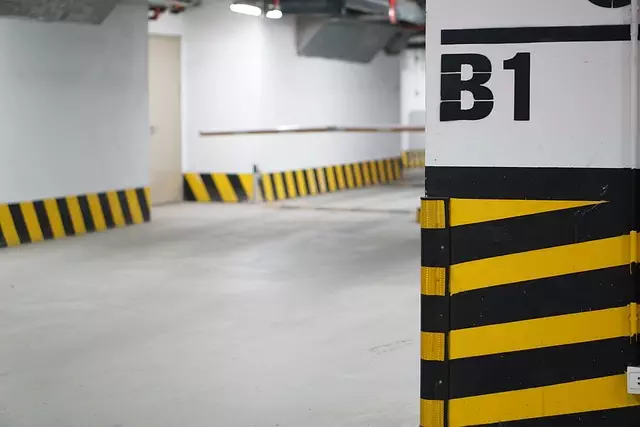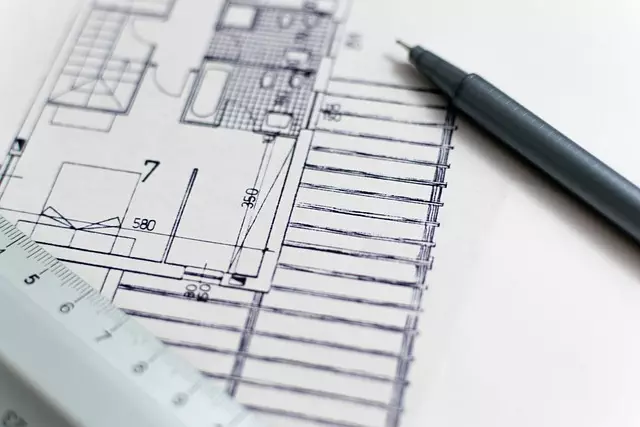In Toledo, Ohio, constructing a durable and cost-effective asphalt parking lot requires meticulous site preparation and adherence to strict material guidelines, especially considering the region's climate with significant temperature fluctuations and variable precipitation. The process involves thorough ground evaluations, removal of debris, addressing subgrade issues, implementing effective drainage systems, and ensuring proper compaction of subbase and base layers to support heavy traffic. Using local aggregates and well-graded materials tailored to Toledo's conditions, along with performance-graded asphalt binders designed for the local climate, is essential for sustained performance and longevity. Precision grading is critical for effective drainage, safety, and a uniform, aesthetically pleasing surface, which is particularly important in a region prone to heavy rainfall and snow. Subgrade stability is also paramount, necessitating geotechnical analysis and treatments to enhance soil strength. Regular monitoring, maintenance, and following ASTM standards and best practices are vital for the ongoing performance of Toledo's asphalt parking lot construction, ensuring they remain functional, safe, and visually appealing over time.
Asphalt parking lot construction is a critical component in infrastructure development, particularly in Toledo, Ohio. This article delves into the intricacies of constructing resilient asphalt parking lots, emphasizing the significance of precise site preparation, material selection, and subgrade stabilization to ensure longevity and safety. We will explore best practices for each stage of construction, from understanding the basics to mastering precision grading for optimal drainage and surface leveling. Discover how Toledo, Ohio asphalt parking lot construction stands out in quality and durability through expert compaction techniques and final touches that culminate in a seamless driving experience.
- Understanding Asphalt Parking Lot Construction: An Overview
- The Importance of Proper Site Preparation for Asphalt Parking Lot Construction
- Material Selection and Mix Design for Durable Asphalt in Toledo, Ohio
- Precision Grading: Ensuring Optimal Drainage and Surface Leveling
- Best Practices for Subgrade Stabilization in Asphalt Parking Lot Construction
- Finalizing the Asphalt Pavement: Compaction Techniques and Finishing Touches
Understanding Asphalt Parking Lot Construction: An Overview

The Importance of Proper Site Preparation for Asphalt Parking Lot Construction

Prior to initiating asphalt parking lot construction in Toledo, Ohio, or any region, meticulous site preparation is a cornerstone for ensuring a durable and long-lasting pavement. This preparatory phase is critical as it lays the foundation for the structural integrity of the asphalt parking lot construction. It involves several steps, including assessing the existing ground conditions, clearing the area of debris and vegetation, and addressing any subgrade issues that could compromise the pavement’s performance over time. Adequate drainage solutions must be implemented to prevent water accumulation, which can lead to puddling and eventual pavement failure. The subbase and base layers are then carefully compacted to provide a stable platform for the asphalt surface course. This rigorous preparation process is pivotal in accommodating traffic loads and withstanding environmental stressors, such as frost heaves and thermal fluctuations, which are common in Toledo’s variable climate. By investing in quality site preparation before asphalt parking lot construction begins, property owners in Toledo, Ohio can ensure that their investment endures, providing a safe and functional parking area for years to come. Moreover, the initial effort in proper site preparation translates to cost savings over the lifespan of the pavement by reducing the likelihood of future repairs and maintenance.
Material Selection and Mix Design for Durable Asphalt in Toledo, Ohio

In Toledo, Ohio, the construction and maintenance of asphalt parking lot construction are critical for ensuring longevity and safety. The selection of materials and the design of the asphalt mix are pivotal in this process. The ideal mix for an asphalt parking lot construction in Toledo’s diverse climate requires careful consideration of local environmental factors, including temperature extremes and precipitation patterns. Local aggregates are often preferred due to their familiarity and compatibility with the climate; they should be well-graded to provide optimal compaction and structural integrity. The bitumen used must be selected for its viscosity and resistance to weathering, ensuring that it remains pliable and durable over time. Additionally, incorporating additives such as air voids can enhance drainage and reduce damage from water intrusion, a common issue in parking lots that can lead to premature failure of the pavement.
The design of the asphalt mix for Toledo’s asphalt parking lot construction must account for traffic volume, wheel loading patterns, and the expected lifecycle of the pavement. Engineers in Toledo typically follow ASTM standards and best practices to ensure that the asphalt mix has the right balance of binder content, aggregate size distribution, and compaction techniques. The use of performance-graded (PG) asphalt binders tailored to the local climate is essential for ensuring long-term performance. Regular monitoring and maintenance are also crucial to extend the life of the parking lot and maintain its safety and functionality. By adhering to strict material selection and mix design criteria, Toledo’s asphalt parking lot construction can stand up to the demands of daily use and environmental challenges, providing a smooth and safe surface for years to come.
Precision Grading: Ensuring Optimal Drainage and Surface Leveling

Asphalt parking lot construction in Toledo, Ohio, demands precision grading to ensure optimal drainage and surface leveling. This meticulous process is critical for the longevity and functionality of any asphalt parking lot. Precision grading involves the use of advanced equipment that can accurately measure and create the desired slope or angle needed for proper water runoff. By carefully controlling the pitch of the asphalt, water can be directed away from structures and towards designated drainage systems, preventing pooling and the associated damage to both the pavement and underlying soil. This not only protects against water damage but also enhances safety by reducing the risk of slipping or hydroplaning.
Furthermore, the surface leveling aspect of precision grading is equally vital for an asphalt parking lot’s performance. It ensures a smooth and even surface that contributes to the overall aesthetic appeal while accommodating the diverse needs of vehicles and pedestrians. In Toledo, Ohio, where weather conditions can be harsh, with both heavy rainfall and snow, precise grading is essential to maintain a parking lot’s integrity throughout the year. Skilled contractors who specialize in asphalt parking lot construction in Toledo, Ohio, understand these challenges and employ state-of-the-art technology and techniques to deliver surfaces that meet the highest standards of quality and durability.
Best Practices for Subgrade Stabilization in Asphalt Parking Lot Construction

During asphalt parking lot construction, the subgrade’s stability is paramount for the longevity and structural integrity of the final pavement. A robust subgrade serves as the foundation upon which the asphalt concrete layers are built, influencing the overall performance and durability of the parking lot. In Toledo, Ohio, where weather conditions can be harsh and variable, ensuring a stable subgrade is even more critical to withstand the test of time. Best practices for subgrade stabilization begin with thorough site preparation, which includes removing all debris and vegetation, compacting native soils, and installing a proper drainage system to prevent moisture-related issues that can compromise the subgrade’s stability. Geotechnical analysis is essential to understand the soil characteristics and determine the appropriate subgrade preparation, including the use of lime or cement stabilization techniques where necessary. These methods enhance the soil’s load-bearing capacity and reduce the potential for rutting, potholes, and other forms of distress that can arise from an unstable foundation.
The process of asphalt parking lot construction in Toledo, Ohio, benefits significantly from adhering to these best practices for subgrade stabilization. It involves selecting the right type of sub-base material, such as crushed stone or recycled asphalt, which provides a uniform and stable layer upon which the asphalt layers can be reliably constructed. The use of advanced compaction equipment and techniques ensures that each layer is compacted to the optimal density, further contributing to the parking lot’s longevity. Regular maintenance and inspections after construction are also crucial for identifying and addressing any issues early on, thereby extending the life of the asphalt parking lot and ensuring it meets the high standards expected in Toledo, Ohio.
Finalizing the Asphalt Pavement: Compaction Techniques and Finishing Touches



